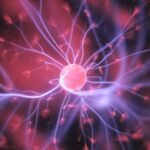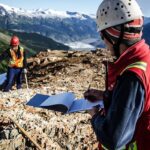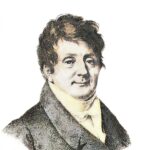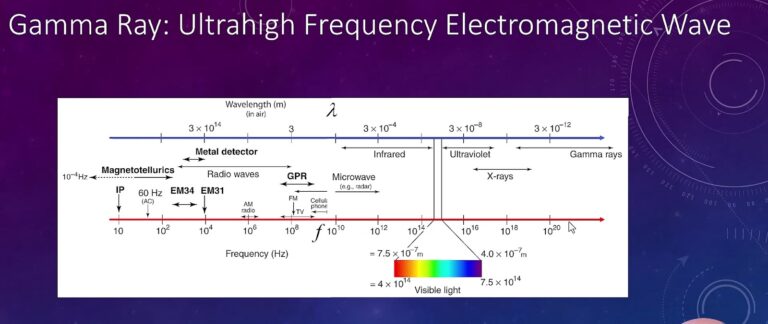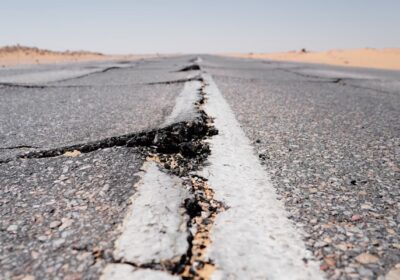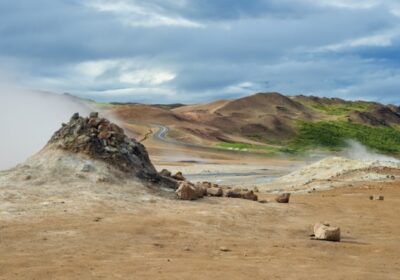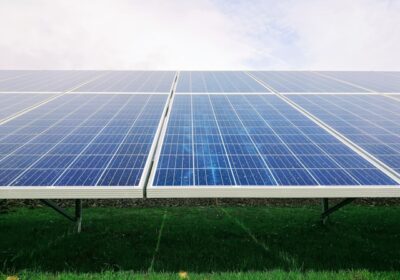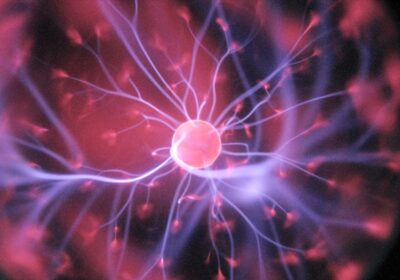
Unlocking the Potential of Geophones
In the pleasant month of May, I made a purchase on eBay that sparked an unexpected fascination. Although I wouldn’t consider myself an avid stamp collector, the allure of these particular stamps, resplendent in their geophysical intricacy, proved irresistible. Originating from East Germany circa 1980, they possess a distinctive quality, departing from the typical schematic illustrations to offer instead meticulous, technical renditions. Among them, the gravimeter and the sonic tool stamps have already captured my attention, prompting me to explore their significance. Yet today, I find myself drawn to delve into the realm of the geophone, a fundamental seismic sensor deserving of its own narrative.
Geophones Unearthed: Ushering in a New Era of Earth Exploration
Deciphering Geophones: An In-depth Look at a 35pf Stamp from a Geologist’s Perspective
The use of geophones in the field of geophysics is beautifully encapsulated in a 35-pfennig stamp. This stamp features a surface geophone backed with a schematic illustration of various elements integral to seismic acquisition process.
Included among these elements are:
- Ray-paths: These are the paths that seismic waves follow within the Earth;
- A recording truck: Typically, this is where the geophysical data captured by the geophones is stored and analyzed;
- Annotations for oil and gas, known in German as Erdöl and Erdgas respectively, emphasizing the crucial role of geophones in hydrocarbon exploration.
The dimensions of this stamp, 43 × 26 mm, only underline its significance – representing a technological powerhouse within a compact form.
The Core Four: Understanding Different Seismic Sensors Used in Exploration Geophysics
In the domain of exploration geophysics, one can generally categorize seismic sensors, often referred to as receivers, into four types:
- Seismometers: While these precision instruments are not typically used in exploration seismology due to their bulkiness and demanding setup requirements, they offer unique advantages. These tools are primarily accelerometers – akin to relative gravimeters – by which they can measure ground acceleration resulting from the force exerted on a test mass. Impressively, seismometers can detect frequencies ranging from 0.001 Hz to 500 Hz, spanning 19 octaves. This broad frequency detection range is however not always needed for exploration seismology, often making seismometers an overkill for common exploration applications.
This detailed comparison not only provides an understanding of the essential types of seismic sensors but also offers a perspective on why geophones, despite being a type of seismic sensor, are lauded for their specialized application in exploration seismology. Their compact size and ease-of-use make them the ideal tool for earth exploration.
By exploring the role and the intricacies of geophones, one can better understand their central role in exploration geophysics and appreciate how they continue to shape our understanding of the Earth’s inner workings. Also, discover the magic of the Ricker wavelet! Unravel its mysteries and applications in seismic analysis. Explore now!
Diving Deeper into the Enigma of Geophones: A Comprehensive Review
As explored in the 35pf stamp, the geophone is a key player in the surveying and exploration of oil and gas – known as Erdöl and Erdgas. This portrayal accurately underscores its instrumental role in the seismic acquisition process, embodying the power of technology in a 43 × 26 mm stamp.
The Stamp: A Schematic of Geophones and Seismic Acquisition Process
The stamp represents a surface geophone, illustrated against the backdrop of a cross-section cartoon detailing seismic acquisition. The key features underlined include:
- Ray-paths: Important paths seismic waves follow within the Earth;
- Recording truck: The hub where geophysical data captured by geophones is stored and analyzed.
This depiction on a postage stamp not only signifies the significance of the geophone in exploration, but it also showcases the compact size and power of this seismic sensor.
Seismic Sensors in Exploration Geophysics: Breaking Down the Four Types
Delving a bit into geophysics, the four fundamental types of seismic sensors used in exploration geophysics are:
- Seismometers: These precision devices are not typically employed in exploration seismology. While they offer unparalleled features, the drawbacks include bulkiness, demanding setup, and calibration requirements which make them impractical for most exploration geology applications. Their use is instead often limited to applications where a broad frequency detection range is desired;
- Geophones: This brings us to geophones, a specialized seismic sensor. Geophones are notable for their affordability, compact size, and ease of deployment – especially in large numbers. The design, as illustrated on the stamp and demonstrated in modern models, measures about 4 × 20 cm and weighs around 400g.
Features and Functions of Geophones
Some unique characteristics of the geophone include:
- Sharp spike design: This is meant to ensure excellent ground contact (coupling);
- Frame-mounted magnet surrounded by a proof mass connected to a copper coil: This setup allows the geophone to measure particle velocity – not acceleration – as the differential motion triggers a current in the coil;
- Frequency range: Geophones can typically detect frequencies ranging from 6 Hz to 250 Hz (spanning about 5 octaves).
Geophones are widely employed on land and on the seafloor, and in cases where repeatability over time is crucial, such as time-lapse surveys, these sensors may be securely cemented into the ground.
The Exceptional Versatility of Geophones
The versatility and distinctive characteristics of geophones make them an essential tool in earth exploration. Their contributions extend beyond just hydrocarbon exploration, as they continue to enhance our understanding of the Earth’s interior. Their compact size, coupled with impressive features, underline the pivotal role of geophones in exploration geophysics.
Unraveling Geophones: The Seismic Sensor Powerhouses Under the Spotlight
Hydrophones: Versatile Marine Seismic Sensors
As marine counterparts of geophones, hydrophones are designed explicitly for usage within the water column. Unsurprisingly, water environments introduce a lot of non-seismic motion, making displacement measurement unsuitable. Consequently, hydrophones adopt an innovative approach.
Packed with two piezoelectric components, hydrophones generate a current when pressure deforms them. To nullify non-seismic pressure changes, they employ tailored physics principles. These sensors are typically towed in streamers behind a vessel, and they exhibit a response band analogous to geophones.
MEMS Accelerometers: Tortoise-sized Giants in Seismic Recording
Drawing a parallel to the accelerometer chip in everyday devices like laptops and cell phones are Micro-Electro-Mechanical Systems (MEMS) accelerometers. Despite their miniature size, these robust devices are efficient in recording seismic waves.
MEMS accelerometers, often termed digital receivers, are essentially micro-analog devices with an inherent digital conversion feature. They can detect frequencies ranging from 4 to 1000 Hz over 8 octaves. Ideally, they can measure down to 0 Hz, albeit it doesn’t always align with regular user experiences.
The Undeniable Impact of Geophones in Geoscience
Eyebrows might raise to see such a strong statement, but it’s hard to dispute the significance of geophones in geoscience. Their importance is emphasized by their transformative impact on seismic imaging, leading to remarkable clarity in results. The value they bring is not just scientific, but also economically significant, with recent stories from Scotland and Spain illustrating this.
In forthcoming discussions, the focus will shift to the 50 pfennig stamp, which intriguingly portrays deep seismic tomography, another vital aspect in the landscape of geophysics.
Unearthing the Physics Behind Geophones and MEMS: An In-depth Study
MSc Thesis by Michael Hons: An Unraveling of Stalwart Seismic Sensors
While investigating the intricate physics behind seismic sensing technologies, a valuable resource is the MSc thesis by Michael Hons, a former member of the CREWES project at the University of Calgary. Deep-diving into geophones and Micro-Electro-Mechanical Systems (MEMS) accelerometers, this study offers intriguing insights.

One particular revelation stands out: MEMS accelerometers actually detect displacement despite commonly being deemed as devices measuring acceleration. This concept arises from the unique characteristics of operational frequencies used – they are significantly below the resonant frequencies of the small proof mass in these sensors. Consequently, displacement becomes directly proportional to, and induced only by, acceleration. Hence, under conventional settings, these tiny devices function effectively as accelerometers.
Hons’ Thesis: A Symbiosis of Laboratory and Field Data
Expanding beyond the initial physics comparison, Michael Hons’ thesis, named ‘Seismic sensing: Comparison of geophones and accelerometers using laboratory and field data,’ provides a comprehensive contrast between geophones and MEMS accelerometers. This study incorporates both laboratory and field data, making it a must-read resource for professionals dealing with these seismic sensing instruments.
The thesis delves deeper into
- The fundamental physics and principles underlying geophones and MEMS accelerometers;
- The practical differences in their operation and data acquisition;
- The detailed analysis and comparison of laboratory and field data from both these devices.
No doubt, the nuances and revelations brought forth by this study provide significant value-adding information for those working with geophones and MEMS accelerometers in the field of seismic sensing.
Conclusion
In conclusion, my foray into the world of stamps has unexpectedly led me down a path of discovery and appreciation for the intricate beauty of geophysical instruments. While my initial purchase may have been a mere impulse, it has sparked a newfound interest and understanding in a subject I had not previously explored. As I continue to explore the stories behind these stamps, I am reminded of the vastness of human curiosity and the endless possibilities for learning in even the most unexpected places.





